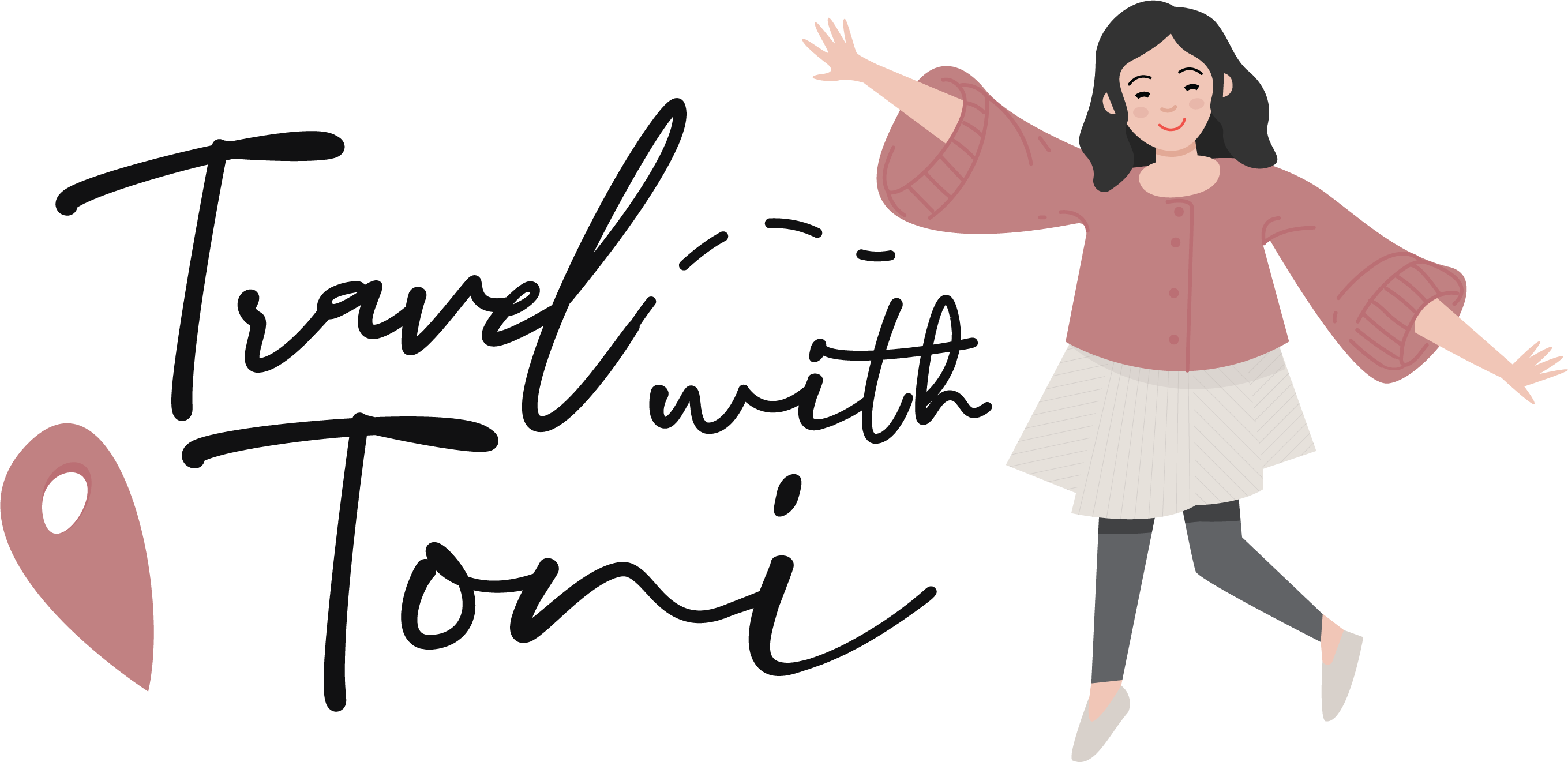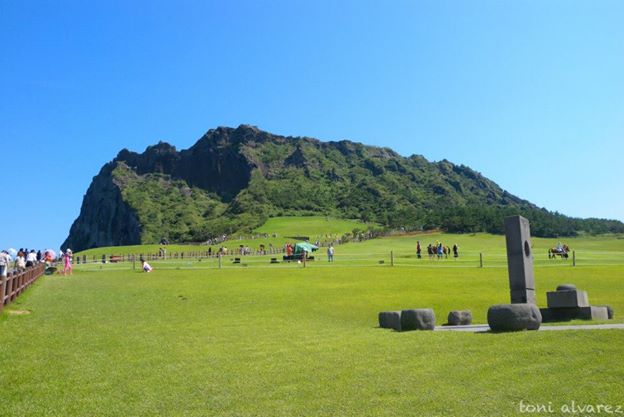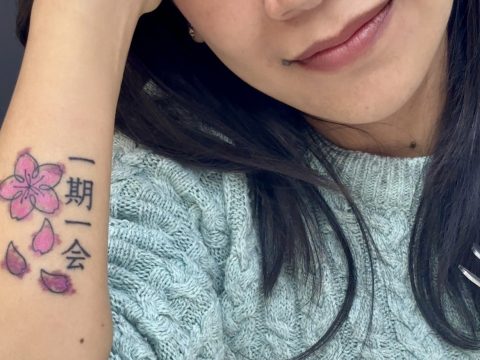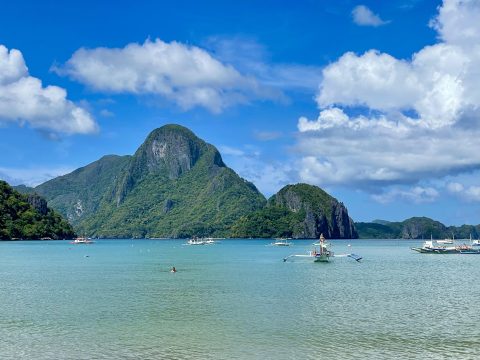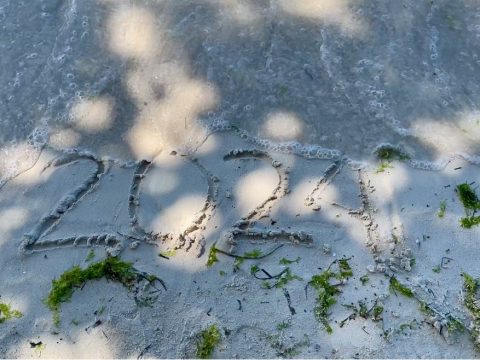Jeju Island or Jeju-do is one of the nine provinces of South Korea. This small island, located in the southwest of Korean peninsula, is a favorite vacation spot among Koreans and Japanese and also remains as their top honeymoon destination. In fact, CNN even regarded Jeju Island as the “Hawaii of Korea”.
Located in Korea’s most southern region, weather in Jeju is notably warmer compared to mainland Korea even during winter months. Jeju is known for three things, abundance of rocks, women, and wind. Wind because the island is significantly windy anytime of the year, and rocks because there are stones everywhere because of past volcanic activity that also formed unusually-shaped basalt rocks. On the other hand, the island’s reputation of having abundant women points back to the time when many men were lost at sea while fishing so the local women were the one who were mostly responsible for a large part of the family’s income.
If you are planning to visit or do a side trip to Jeju Island, then this 2-day travel guide might be able to help you plan your trip to the “Island of Gods”.
Disclaimer: This post was written in 2013 so some information may be outdated already. Will try to update this post soon.
GETTING THERE: There are no direct flights from Manila to Jeju Island. You need to book AirBusan via Cebu City first, though I highly I suggest that you just fly to Seoul or Busan before heading to Jeju Island so you can at least see two of SoKor’s biggest cities.
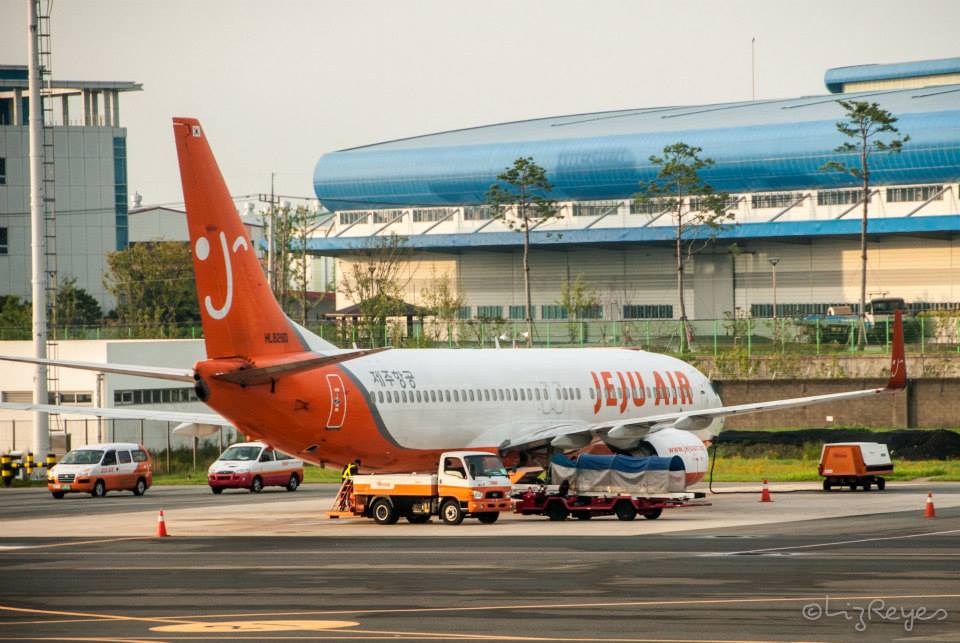
AirBusan: www.airbusan.com
Jeju Air: www.jejuair.net
By Sea: Ferries to Jeju Island depart from Incheon, Mokpo, Wando and Busan. Check VISIT KOREA for more info.
SOME FRIENDLY AND IMPORTANT REMINDERS:
THINGS YOU NEED TO KNOW: This is an international travel so it is only necessary for you to have a valid passport. You can secure one from the Department of Foreign Affairs. If you already have a passport, make sure it is still valid for 6 months from the time of travel. If in doubt, you can always call Korean embassy in Manila, or Pilipinas Teleserve (24-hour Passport Assistance) 737-1000.
Note: This 6 months validity period only applies in certain countries, including Korea. If you plan to go to other countries, specifically in European countries, check with their respective embassies here in Manila.
– Philippine passports holders are not required to present a visa when visiting Jeju Island. However, if you plan to go via Seoul or Busan, you really need to apply for a Korean Visa.
– Always bring with you 2 valid IDs in case the immigration asks for it.
– Always bring your passport wherever you go, that’s always an SOP when traveling to other countries.
– There’s few public transportation in Jeju Island so hiring a tour guide or private car is really a must, not unless you have enough time to kill, want to go backpacking and join the Jeju Olle Trail.
– Since majority of Koreans don’t speak and understand English, these might come handy. (Hello- Annyeonghaseyo Thank you- Kamsamhamnida) This is not required to learn but sounds cute, especially when taking photos. Instead of saying “one, two, three…” say “hana, dul, cet…” instead of “Say cheese…” say “Kimchi!”
ACCOMMODATION: There are lots of accommodations in Jeju Island, up to you to choose whether you wish to stay in an Ondol room or traditional Korean guesthouse (more expensive) or in a modern hostel. For a more efficient way of touring the island, it is highly suggested for you to stay in Seogwipo area on your first night then in Jeju City on your 2nd and last night.
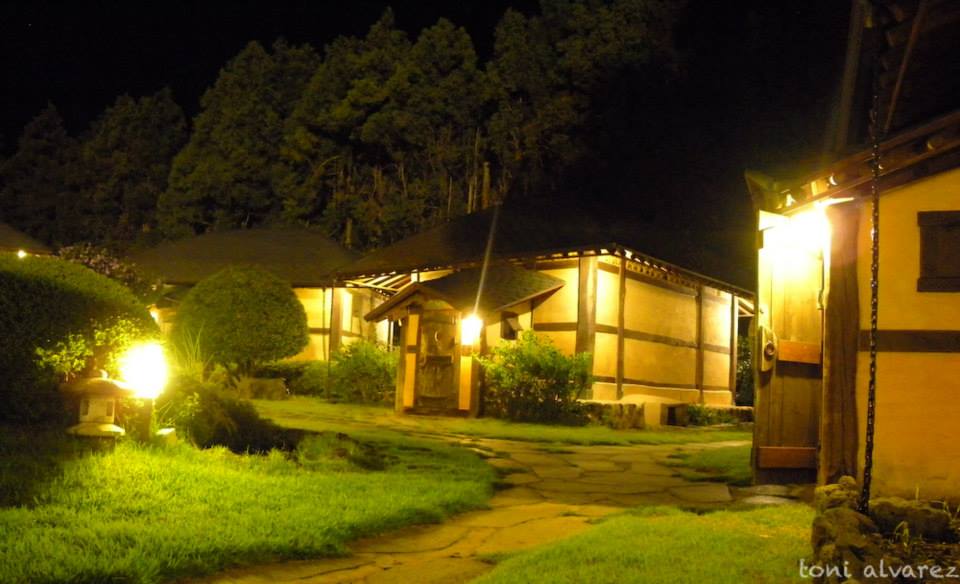
Hotels:
Lotte Hotel Jeju
35, Jungmungwangwang-ro 72beon-gil, Seogwipo, Jeju-do 697-808, South Korea
SEAES Hotel and Resort
198, Jungmungwangwang-ro, Seogwipo, Jeju-do 697-120, South Korea
Hotel Teddy Valley
2007 Sangchang-ri, Andeok-myeon, Seogwipo, Jeju-do 699-921, South Korea
Guesthouses:
Kasan Tobang Hanok
Yeongcheon-dong, Jeju-do, CJ, South Korea
Tae Gong Gak
369, Taepyung-Ro | (Seogwi-Dong), Seogwipo, Jeju-do 697-812, South Korea
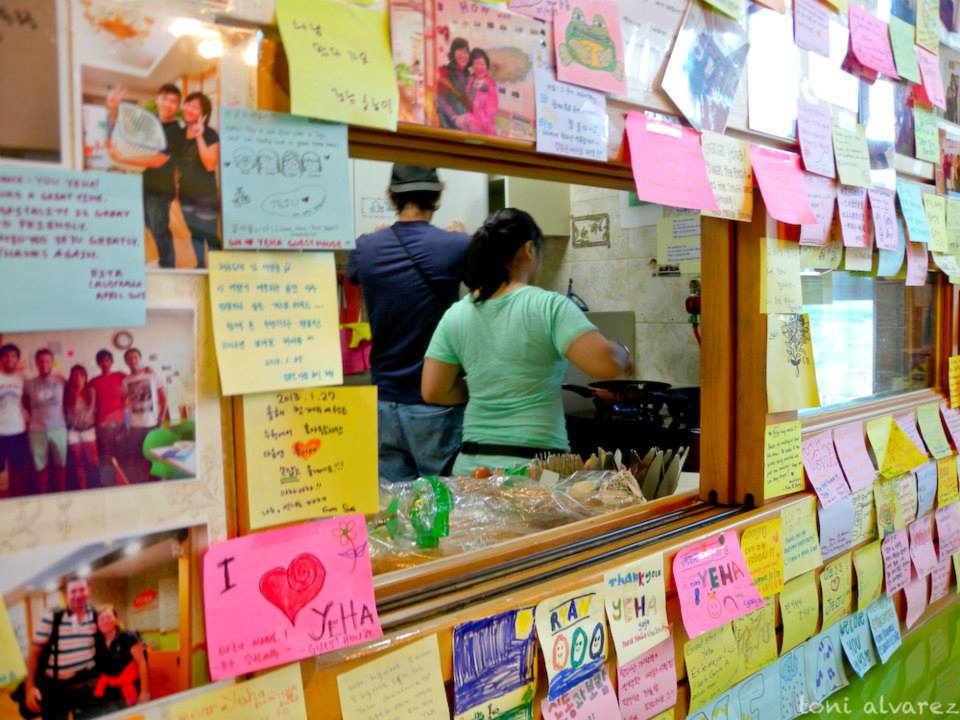
Yeha Guesthouse (City Hall area)
278, Seogwang-ro, Jeju, Jeju-do, South Korea
Goodstay December Hotel
15, Sammu-ro 1-gil, Jeju, Jeju-do 690-170, South Korea
Sum Guesthouse Jeju Airport
2829-1 Yongdam 1-dong, Jeju, Jeju-do, South Korea
Backpackers in Jeju
1-1, Gwangyang 8-gil, Jeju, Jeju-do, South Korea
MEAL When in Jeju, don’t miss the chance to eat their famous black pork. Seafood is abundant in Jeju Island so most restaurants there serve seafood, especially Abalone.
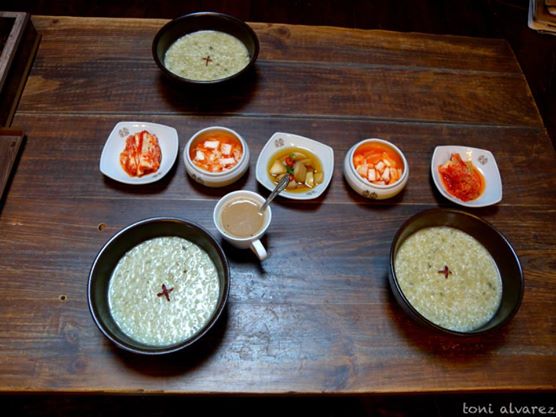
TOURING: Touring Jeju Island costs roughly Php 6,000 for 8 hours and usually takes 2 days to visit the East and West course, so make that Php12,000. On the other hand if you are a backpacker and love traveling by foot, then joining the Jeju Olle Walk would surely interest you. Visit www.jejuolle.org for more information on this walking tour.
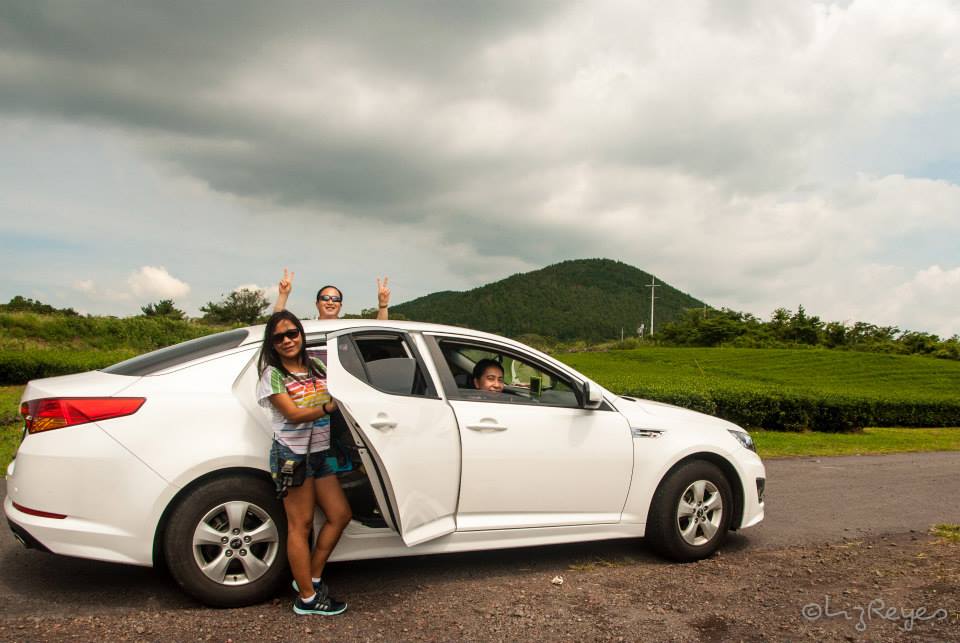
Mr. Han Jeong Yeong – lh2eon@naver.com; 010-2082-0095 or ask for Mr. Kevin if Mr. Han is not available. Kevin is a really nice guy. =)
Mr. Kim- 010-4500-0231
Mr. Kim Hak Seong- (different one) – kimi1246@daum.net
Mr. Kim Ki Hyun- kimi9461@hanmail.net; 010-2693-9461
Mr. Lee Tae Young– 010-9981-9320
Yeha Guesthouse- http://www.yehaguesthouse.com
THINGS YOU NEED:
Comfy Footwear- Since you will be walking most of the time to most of the tourist spots, especially when you visit the 600-stair-climb Seongsan Ilchulbong Peak
Money- No brainer.
Camera- Need I say more? You’ll regret if you don’t bring one.
Shades- Heat of the sun can be pretty unbearable so it’s important to protect your eyes
Sun Block- Protect your skin especially when you climb Seongsan Ilchulbong Peak in the afternoon.
Shawl or Cap- The sun may be unbearable when climbing Seongsan Ilchulbong Peak. An umbrella will make you look like a tourist so a shawl would do.
BUDGET: Bring dollars with you and exchange them to Korean Won in Busan or Seoul before heading to Jeju. If you need extra Won, you can always exchange your dollars at the International Airport or in a local bank in Jeju.
* This budget is good for 2 people already
Airfare: Php 8,000 or Php 4,000/head (Busan-Jeju-Busan via AirBusan)
Accommodation: Php9, 000 (good for 2 nights)
Touring: Php 12,000 for 16 hours (English speaking driver/guide) Php 8,000 (For non-english speaking driver/guide)
***You may also refer to my BusanTravel Guide for more information on the Budget***
DAILY ITINERARY
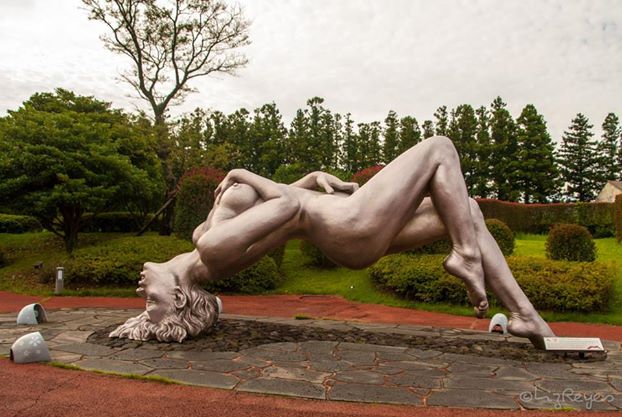 DAY 1. Get the earliest flight to Jeju. Flight from Busan to Jeju usually takes less than an hour and touring usually starts at 9:00AM so the perfect time to arrive in Jeju is at 8:30AM. Your driver/tour guide will be the one to pick you up at the airport. On Day 1, you will be visiting the West Course of Jeju Island.
DAY 1. Get the earliest flight to Jeju. Flight from Busan to Jeju usually takes less than an hour and touring usually starts at 9:00AM so the perfect time to arrive in Jeju is at 8:30AM. Your driver/tour guide will be the one to pick you up at the airport. On Day 1, you will be visiting the West Course of Jeju Island.
1st stop: Jeju Loveland. If you are the conservative type, then visiting Jeju Loveland might just offend you. Jeju Loveland is an outdoor sculpture park that focuses on sex and eroticism themes. This theme park, which opened in 2004, houses 140 sculptures featuring humans in various sexual positions. They also have an exhibition dome where funny and naughty dioramas can be found and sex toys can be bought. Also, be mindful that the park is only for adults (18+) but there’s a play and recreation area where minors can stay while adults enjoy and explore the park.
Entrance Fee: 9,000Won or roughly Php400
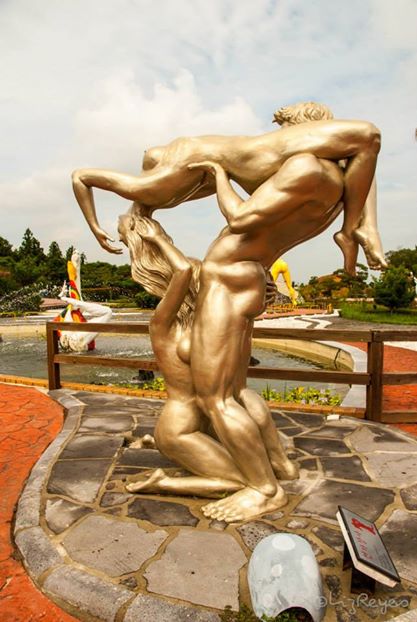
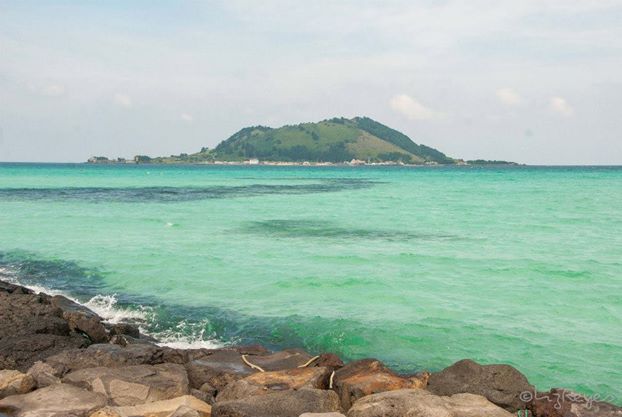
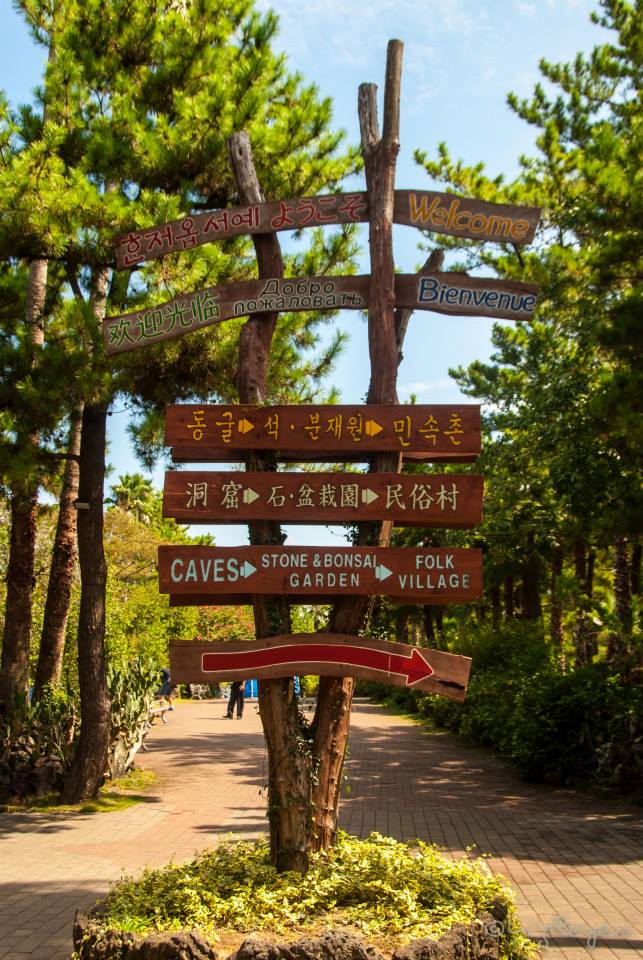 2nd stop: Hallim Park. Hallim Park is a theme park on a 80 acre land. Needless to say, the park is very big that you need to allot a whole day to check out all the 9 theme parks of Hallim. The 9 themes of the park include the Subtropical Botanic Garden; Palm Tree Avenue; Wild Grass and Flower Garden; Hyeopjae and Ssangyong Cave; Jeju Stone and Bonsai Garden; Jae-Am Folk Village; Bird Garden; Jae-Am Stone Exhibit Hall and Water Garden. We weren’t able to visit all the theme parks because it’s getting pretty hot already and our feet are already tired. IMO, worth visiting are Jae-Am Folk Village (and I regret not going there because it’s far), Palm Tree Avenue, Wild Grass and Flower Garden and Jeju Stone and Bonsai Garden. These theme parks are far from each other so the map provided by the park will more or less give you an idea on what should be your itinerary inside Hallim Park.
2nd stop: Hallim Park. Hallim Park is a theme park on a 80 acre land. Needless to say, the park is very big that you need to allot a whole day to check out all the 9 theme parks of Hallim. The 9 themes of the park include the Subtropical Botanic Garden; Palm Tree Avenue; Wild Grass and Flower Garden; Hyeopjae and Ssangyong Cave; Jeju Stone and Bonsai Garden; Jae-Am Folk Village; Bird Garden; Jae-Am Stone Exhibit Hall and Water Garden. We weren’t able to visit all the theme parks because it’s getting pretty hot already and our feet are already tired. IMO, worth visiting are Jae-Am Folk Village (and I regret not going there because it’s far), Palm Tree Avenue, Wild Grass and Flower Garden and Jeju Stone and Bonsai Garden. These theme parks are far from each other so the map provided by the park will more or less give you an idea on what should be your itinerary inside Hallim Park.
Entrance Fee: 10,000 Won or roughly Php424.00
* Before heading to your next stop, ask your tour guide/driver to bring you to a nearby restaurant where you can have your lunch. Tell him that you want to taste their famous Black Pork. We had a taste of it a Korean Barbecue restaurant near the Teddy Bear Museum. You can also visit the museum if you still have time, entrance fee is 7,000 won or roughly Php300.
3rd stop: Green Tea Plantation and SEAS Hotel and Resort. Before your next stop, you will be able to pass by a green tea plantation and the SEAS Hotel and Resort, where the Koreanovelas “Secret Garden” and “Boys Over Flower” were filmed. Take a quick stop to check out the place and for some photos before heading to your next destination.
Entrance Fee: Free

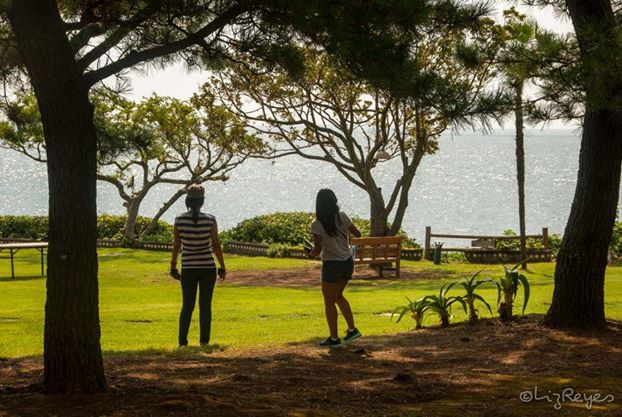
Entrance Fee: 2,000 Won or roughly Php85.00
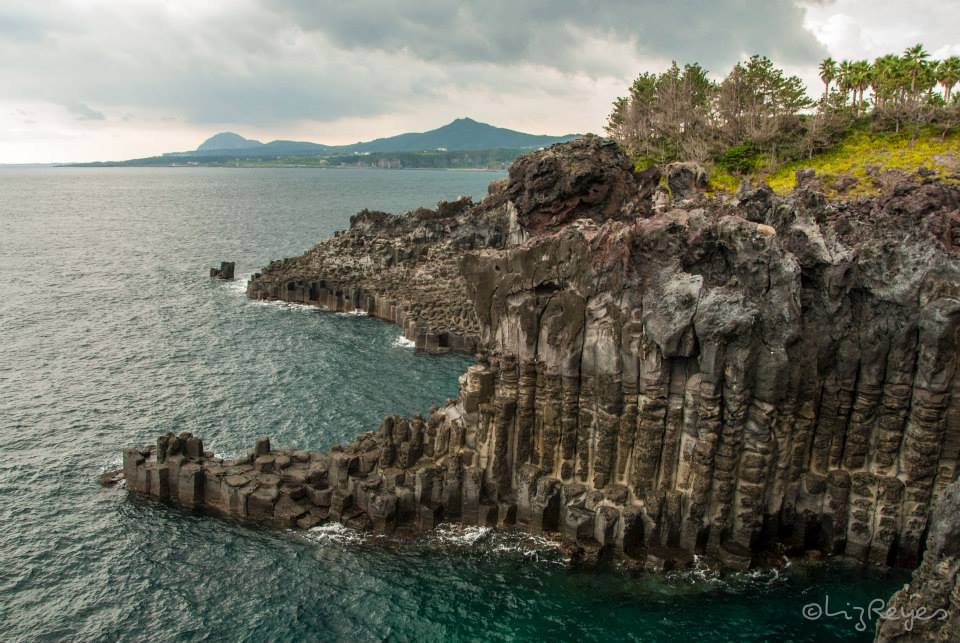
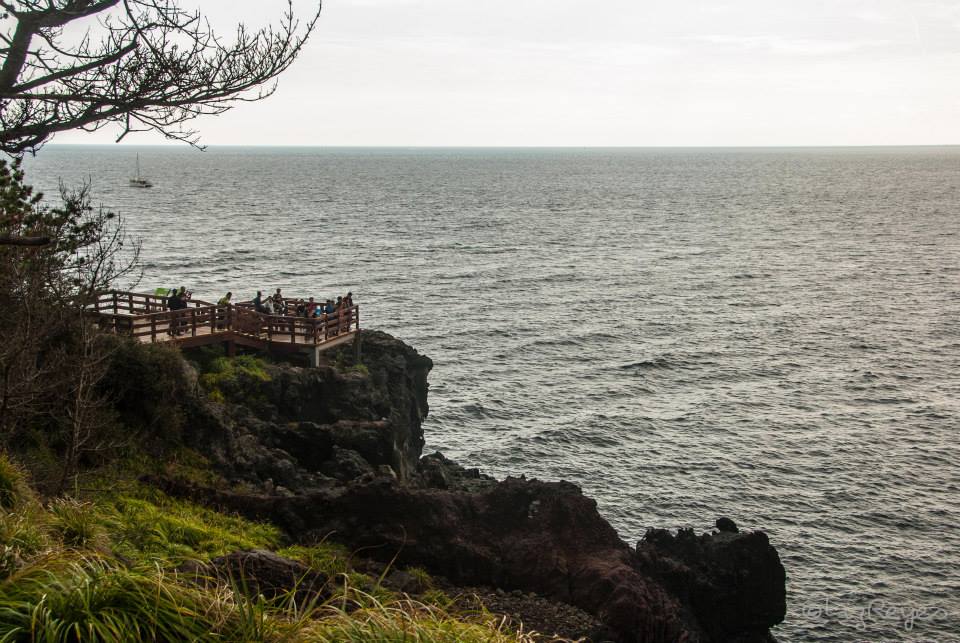
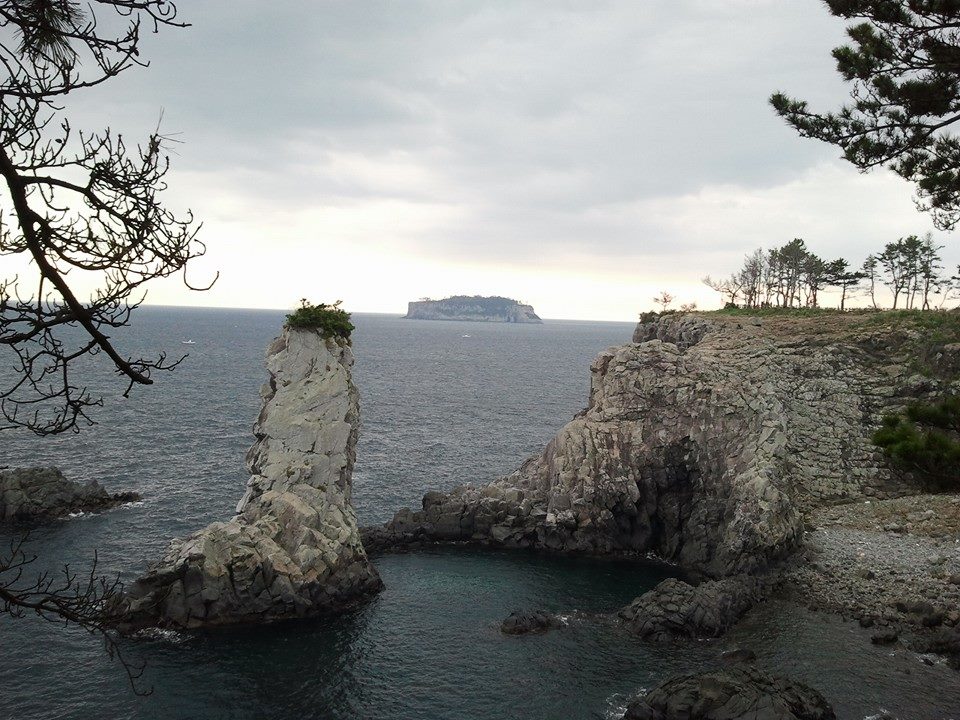 5th stop: Oedolgae Rock. If you are a fan of the Koreanovela “Jewel In the Palace”, then most probably you are familiar with this place. The Oedolgae area is where Dae Jangeum carried Lady Han on her back after being thrown away from the palace and sent to Jeju for exile.
5th stop: Oedolgae Rock. If you are a fan of the Koreanovela “Jewel In the Palace”, then most probably you are familiar with this place. The Oedolgae area is where Dae Jangeum carried Lady Han on her back after being thrown away from the palace and sent to Jeju for exile.
Oedolgae Rock, (pronounced as Wey-dohl-gae) or also known as the Lonely Rock, stands 20m high and 10m in circumference. It has a unique shape that has a phallic symbol. However, there are many legends surrounding this lone rock in the ocean, one legend says that the rock is the wife of a fisherman who turned into stone after days of crying when her husband fails to return home. On the other hand, her husband’s dead body floats towards her turning into the flat base that you can now see at the bottom of the Oedolgae Rock.
Entrance Fee: Free
6th stop: Cheonjeyeon Falls. Cheonjeyeon, or God’s Pond, is one of the main attractions in Jeju Island. IMO, the 22m high falls is not that amazing if you are going to compare it with other falls because the water pressure of the falls is very much dependent on the weather or the rain situation in Jeju. However, the 1km walk from the entrance to the falls is actually the best part in visiting Cheonjeyeon Falls. The lush greeneries, koi fishes, wild ducks and stunning view are usually the favorite part of the whole experience among tourists.
Entrance Fee: 2,000 Won or roughly Php85.00
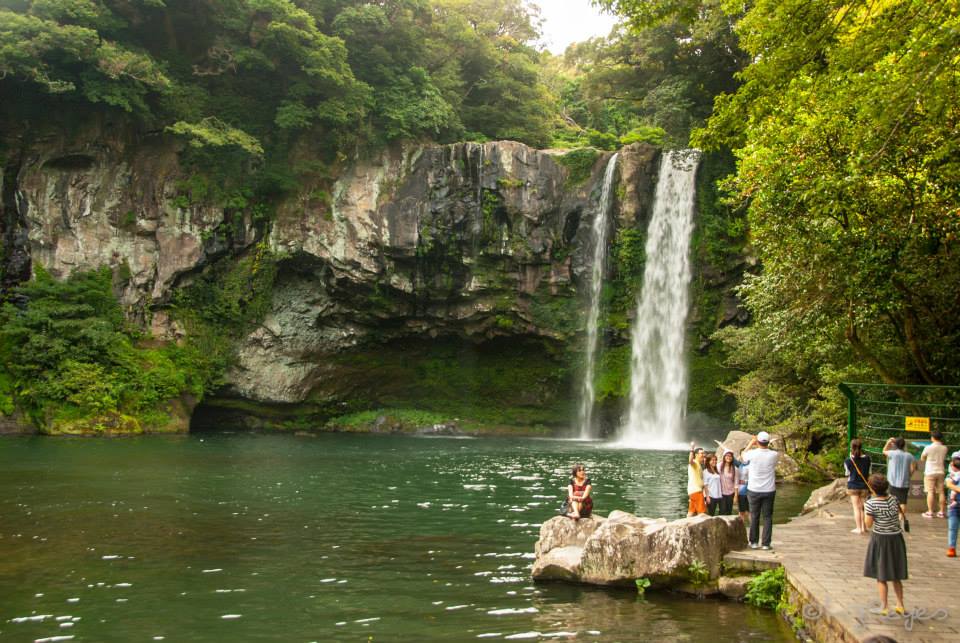
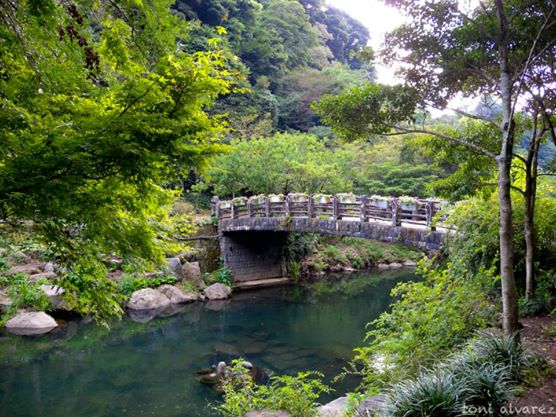
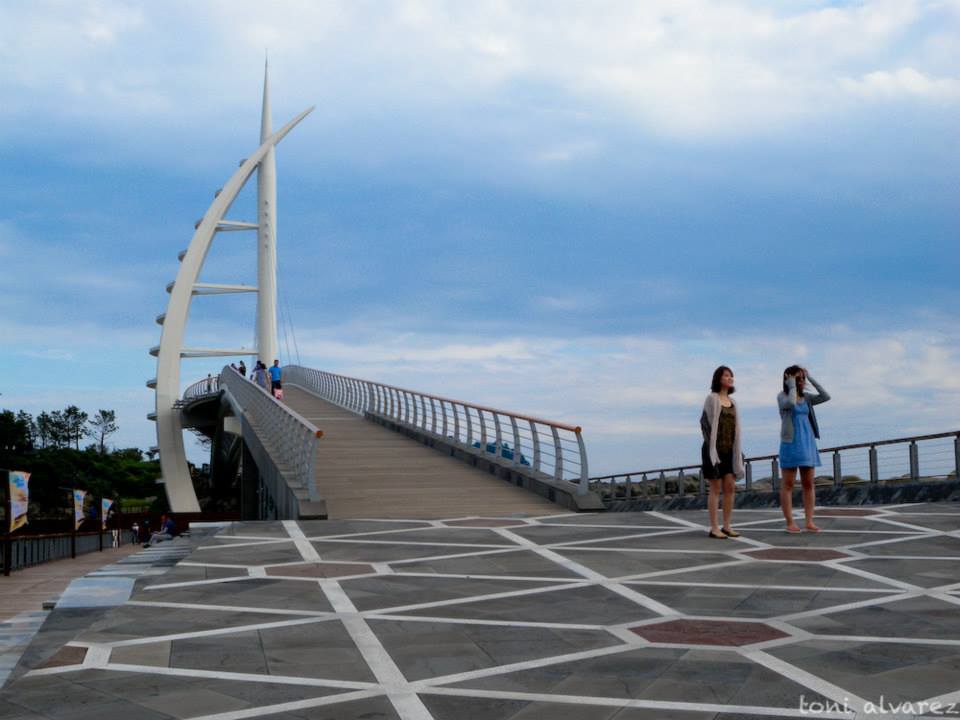
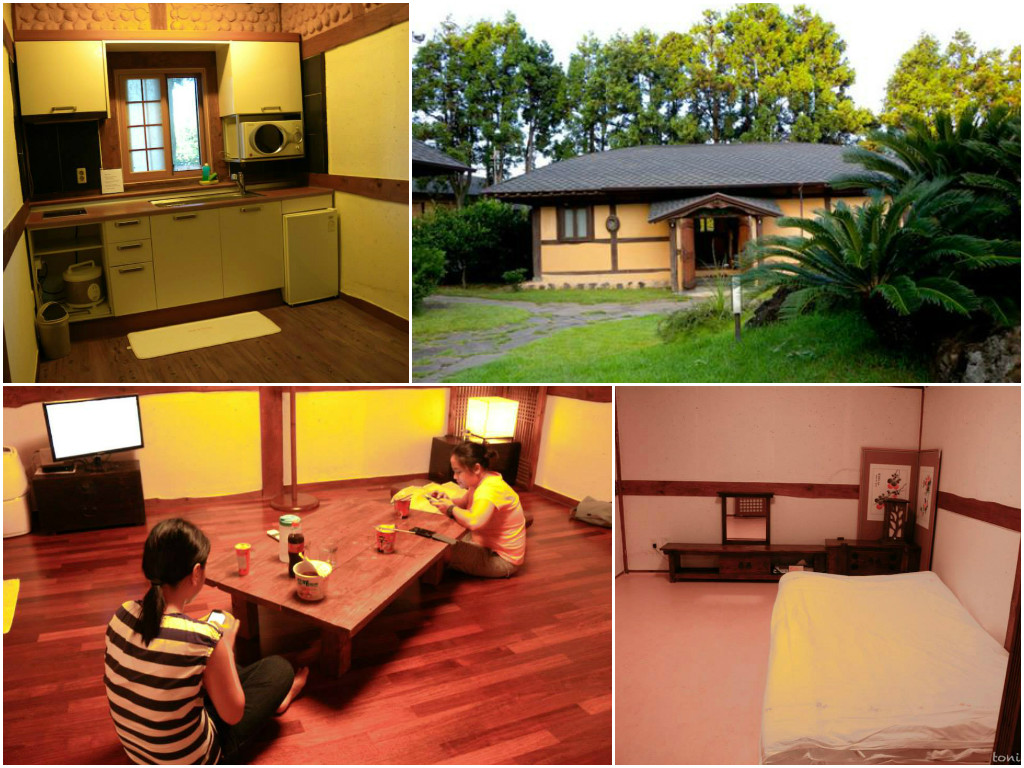
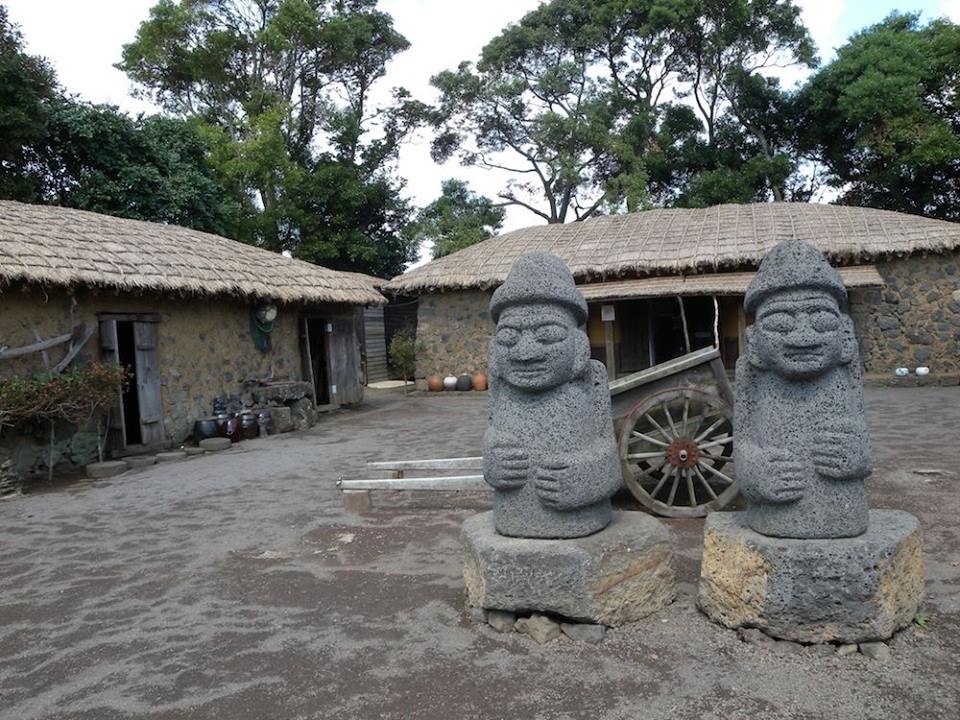 1st stop: Seongeup Folk Village. Seongeup Folk Village gives you a glimpse of how ordinary Koreans, especially in the olden days, live. You can see their dwellings, how and where they cook their food, how they ferment their berries and even their famous black pig, yes a live black pig that looks just like our native pig. Again, if you are fond of Koreanovelas, especially the historical ones like “Jewel In The Palace”, then you will find Seongeup Village interesting.
1st stop: Seongeup Folk Village. Seongeup Folk Village gives you a glimpse of how ordinary Koreans, especially in the olden days, live. You can see their dwellings, how and where they cook their food, how they ferment their berries and even their famous black pig, yes a live black pig that looks just like our native pig. Again, if you are fond of Koreanovelas, especially the historical ones like “Jewel In The Palace”, then you will find Seongeup Village interesting.
We met a Filipina tour guide in Seongeup Village so she was able to explain to us very well the history of the village and Jeju as well. It’s only from Grace, our tour guide, where we learned that the famous Jeju Black Pig used to eat human poop/dung during circa 1940’s or earlier, the history of Stone Grandfather Dol Hareubang and even the various symbolisms used in Jeju.
When in Seongeup, make sure to try their Omija, an herbal drink made out of fermented berries. It can help cure acne, headache, kidney problems and good for diabetics. It’s kind of pricey but worth a shot. They also have other herbal medicines which you can try. As we all know, Koreans, especially their ancestors, are used to taking medicinal plants so I guess they are really credible enough when they say that a particular plant is effective for healing ailments. Google the benefits of OMIJA.
Entrance Fee: Free
2nd stop: Seopjikoji. Seopjiko is located on the eastern shore of Jeju-do Island. The picturesque green field, rich with wild flowers, is definitely a sight to behold. The narrow pathway, overlooking the vast ocean, leads to the church and house where Korean drama “All In” was filmed. If you happen to be in Jeju during April, don’t miss the chance of going to Seopjikoji and take a photo of their famous rapeseed flower fields.
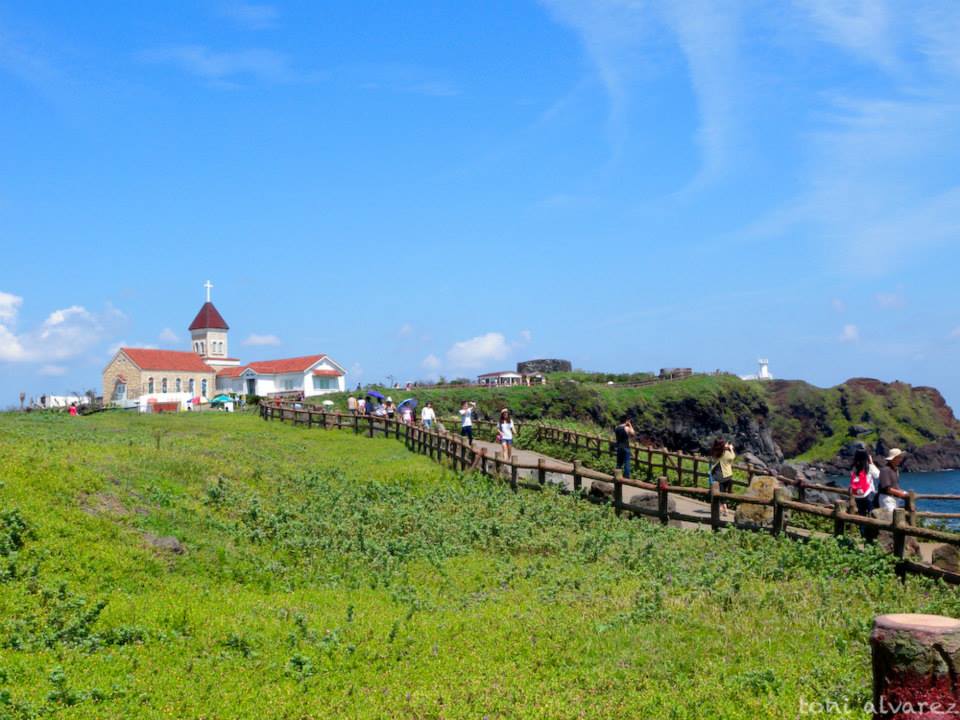
3rd stop: Seongsan Ilchulbong Peak. Seongsan Ilchulbong Peak or Sunrise Peak is one of the UNESCO World Heritage Sites. It rose from under the sea after a volcanic eruption over 50,000 years ago, creating a huge crater at the about 600m in diameter and 90m high.
At first, the volcano seems intimidating to climb but once you start your ascend, you will already get the hang of it. The 600 step-climb to the peak, which usually takes about 30-40 minutes depending on your pace, is all worth it once you have reach the top or peak. People often go here to watch the Sunrise because as its name “Sunrise Peak” implies, waiting and watching the sunrise here is definitely a mind-blowing experience.
Entrance Fee: 2,000 Won or roughly Php85.00
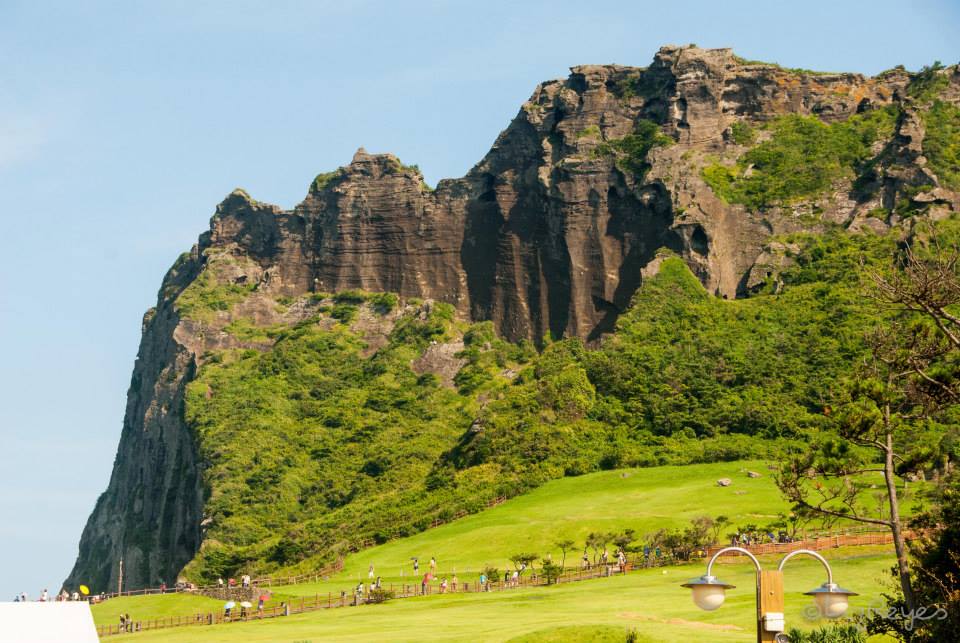

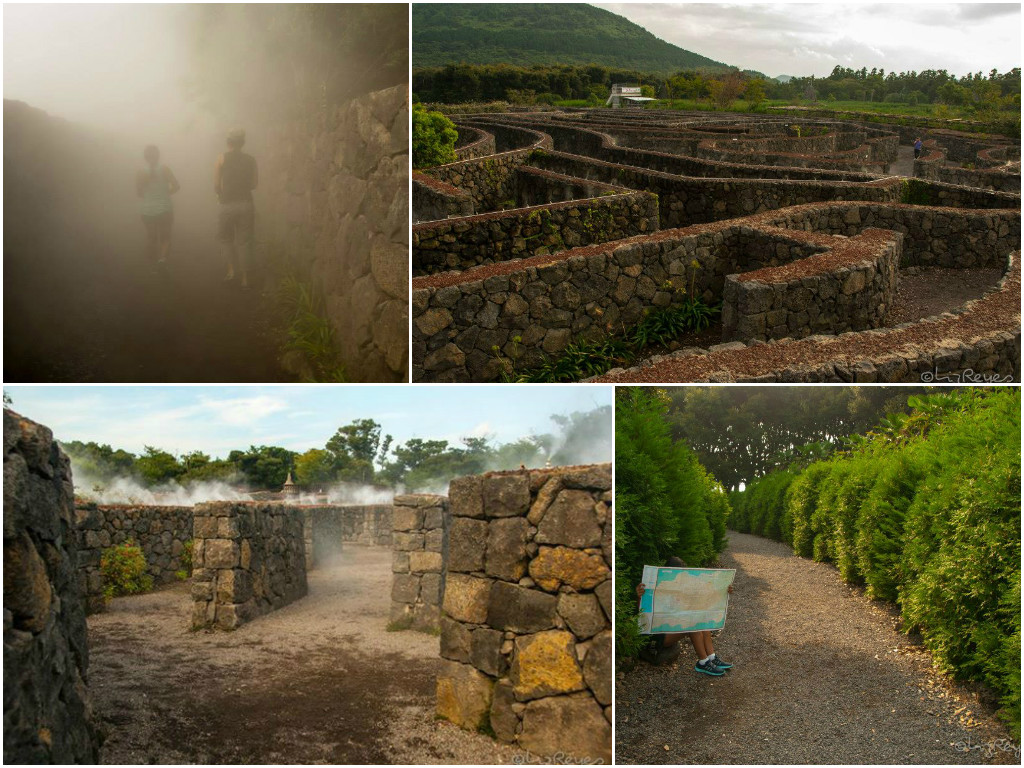 4th stop: Maze Land. There are other Maze Parks in Jeju Island so be sure to tell your guide to specifically bring you to the biggest one, which is Maze Land. Maze Land boasts of the world’s longest stone maze, measuring roughly 5.3km in total length. The park is divided into three themes; Stone Maze, Wind Maze and Haenyeo Maze. Each is made of stone and evergreen and Leylandii trees.
4th stop: Maze Land. There are other Maze Parks in Jeju Island so be sure to tell your guide to specifically bring you to the biggest one, which is Maze Land. Maze Land boasts of the world’s longest stone maze, measuring roughly 5.3km in total length. The park is divided into three themes; Stone Maze, Wind Maze and Haenyeo Maze. Each is made of stone and evergreen and Leylandii trees.
Going to the Maze Land reminds me of the now defunct show “Takeshi’s Castle” because of the series of obstacles that one needs to hurdle, in this case, three mazes. Among the three themes, the hardest one, in my opinion, is the Stone Maze. Not only it is full of dead ends, the stone emits a sort of mist and fog, making it hard for you to see where you are headed. The only tip that I can share is for you stick to the outside of each maze and don’t go in the middle, not unless you really want to challenge yourself and still have time to get lost. Once you have finished the maze, there’s a platform where you can ring the bill, signifying that you have reached the exit and successfully finished the labyrinth.
Entrance Fee: 9,000 Won or roughly Php377.00
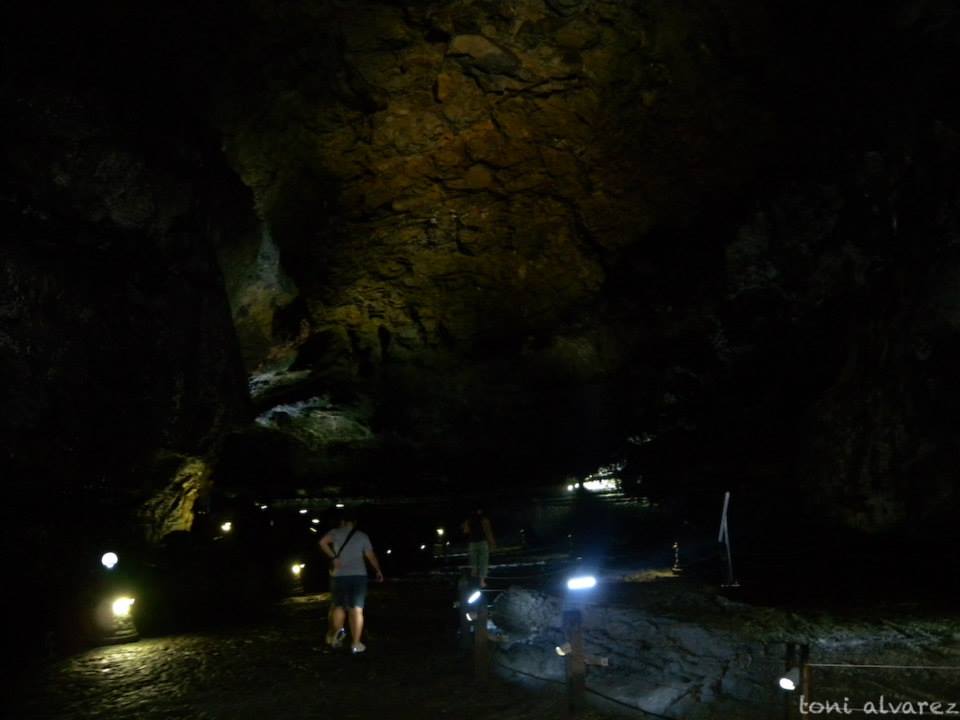 5th stop: Manjanggul Cave. Manjanggul Cave, one of the largest lava tubes in the world, was formed between 200,000 and 300,000 years ago when a molten lava burst through the earth’s crust, creating a giant lava tunnel. Compared to other lava tunnels, this UNESCO World Heritage Site is so humungous that it reaches 30 meters in height and 23 meters in width. The network of tunnel is 13km long but only 1km is open to visitors.
5th stop: Manjanggul Cave. Manjanggul Cave, one of the largest lava tubes in the world, was formed between 200,000 and 300,000 years ago when a molten lava burst through the earth’s crust, creating a giant lava tunnel. Compared to other lava tunnels, this UNESCO World Heritage Site is so humungous that it reaches 30 meters in height and 23 meters in width. The network of tunnel is 13km long but only 1km is open to visitors.
Stone pillars and stalactites of different shapes and sizes can be found inside the lava tube but the more famous and eye catching is the “Turtle Stone” because it looks like the shape of Jeju Island. Temperature inside the tube can be cool and damp so don’t forget to bring a jacket with you when you go down.
Entrance Fee: 2,000 Won or roughly Php85.00
6th stop. Check in at your hotel in Jeju City and if you still have enough time and energy, try exploring Jeju City at night before your flight back to Busan or Seoul the next day
MUST TRY AND BUY IN JEJU
* Never leave Jeju without tasting their famous Black Pork. It looks and tastes just like our ordinary native black pig but for what it’s worth, just try it. =)
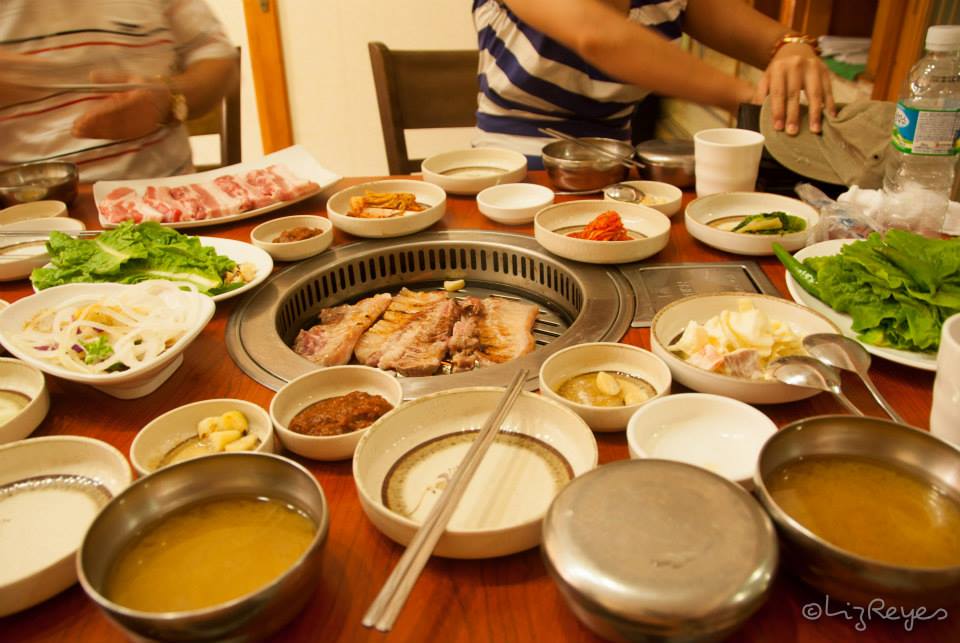
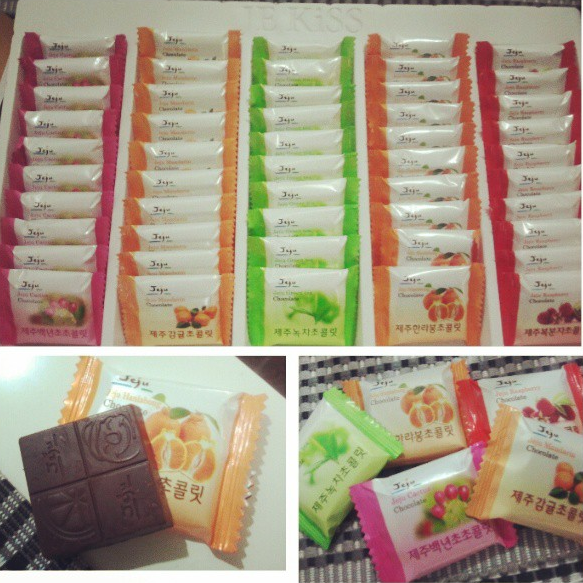
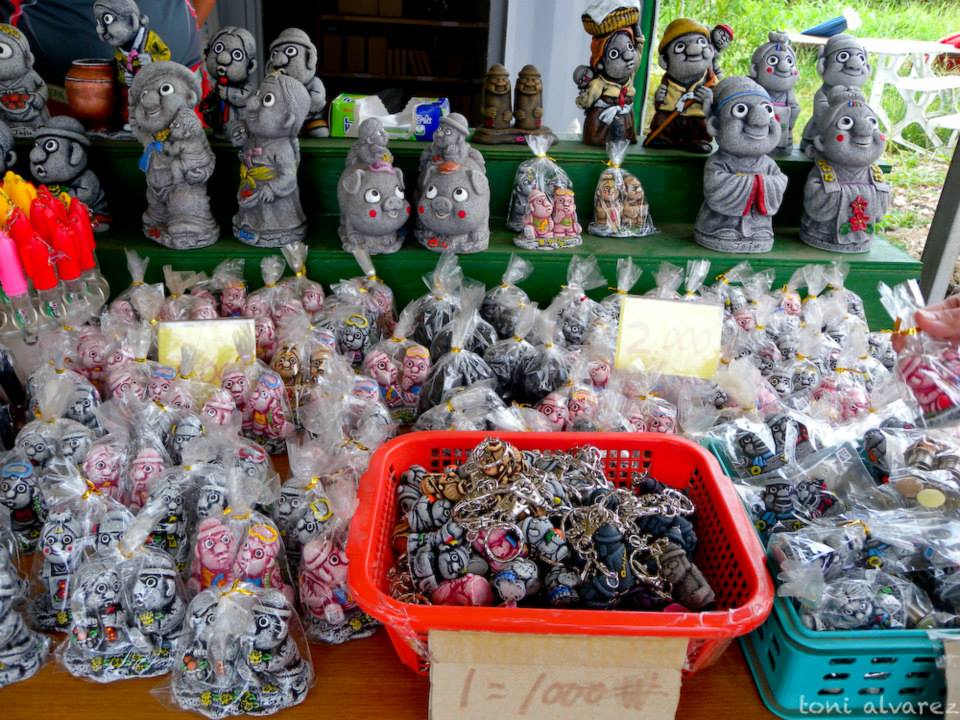
WATCH MY JEJU ISLAND TRAVEL VIDEO
